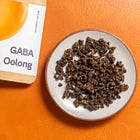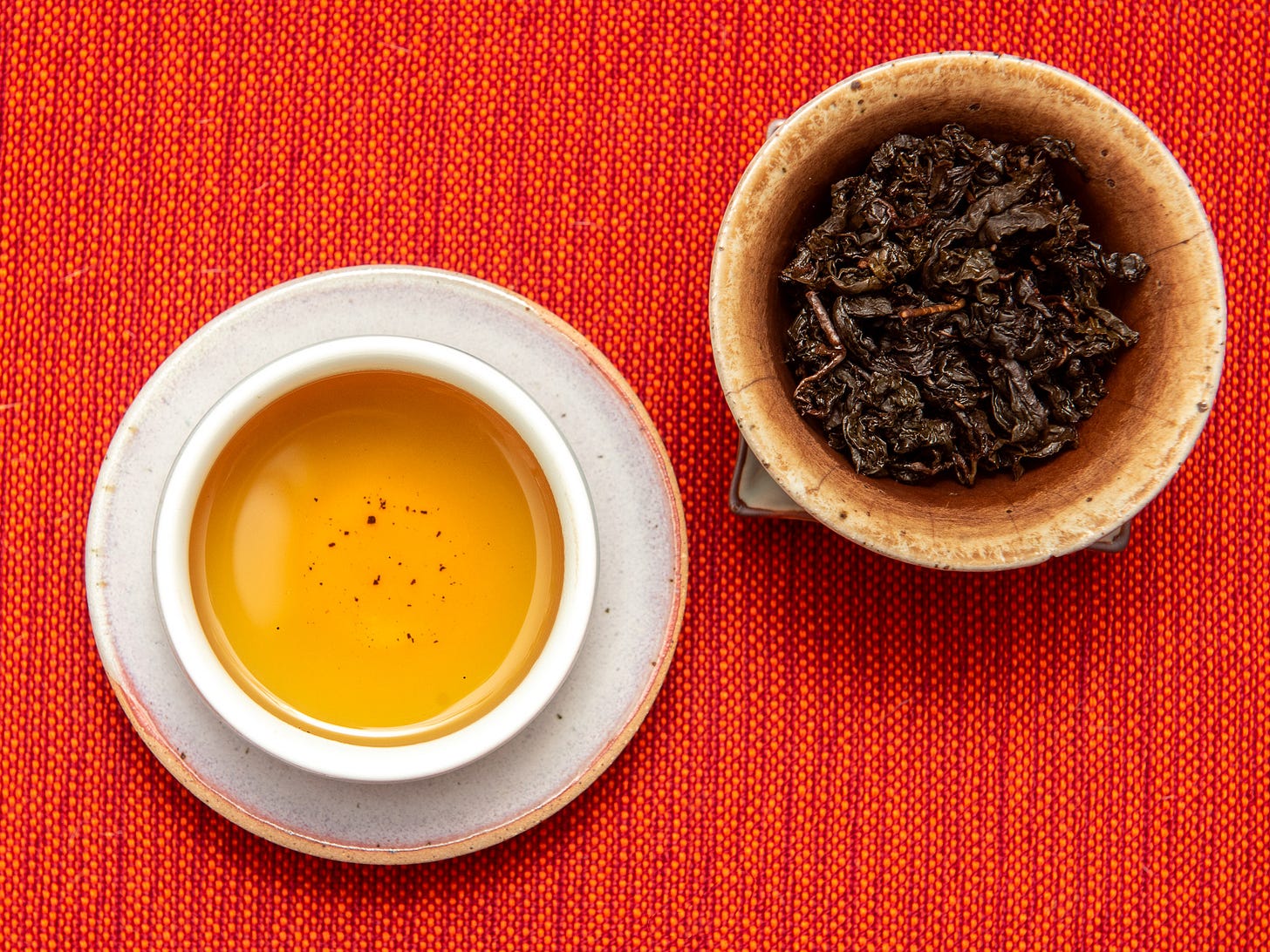The winemaker’s tea garden
Bold and brassy oolong + winegrower Shelby Perkins on creativity through agriculture.
Fire and florals
The tea: Double red oolong, sold by BANGtea. $25 for 50g.
Tieguanyin was my first love. Strong like iron (“tie”) and graceful like the bodhisattva of compassion, Guanyin, this oolong from Fujian creates beauty through contrast. I’m talking about the heavily roasted version of the tea that’s not so popular in its home county of Anxi anymore, but that members of the Fujianese diaspora carried in their pockets to Hong Kong, Taiwan, and regions of Southeast Asia. Tieguanyin is like a flower sprouting from glowing embers. As you steep and sip, deep roasted flavors peel back to reveal gentle floral notes at their core.
Today’s tea isn’t a tieguanyin, but it reminds me of one in the best way. It’s a deeply flavorful oolong from Taiwan that’s grown at elevation and roasted in four sessions for a combined 60 hours of burnished heat. I taste more brass than iron in the brew and the white flowers aren’t the distinctive orchid fragrance of the tieguanyin cultivar, but the same craft comes through. It’s difficult and costly to make a tea like this, with little margin for error. One sign of quality is the finish: it just goes and goes.
The source: The last time I covered Taiwan oolong specialist BANGtea it was about their delicious GABA style. Founder Sam Tilney commissioned this double red from a maker in Shan Lin Xi to approximate the character of a traditional charcoal roasted tea, but using modern ovens, which offer the roaster more control and less likelihood of overheating the leaves. Heavily roasted teas like this one are typically baked in several sessions that are spaced out to let all the volatile compounds settle. Think of it like resting a piece of meat after cooking: juices need time to redistribute.
To brew: I brought this tea on the road with me to steep in a thermos and woof, that tangy brew probably could have fueled the car. I loved it, especially the intense hickory aromas that spilled out whenever I lifted the lid. Back home, I’ve found more balanced brews with 6 grams in an 80 milliliter gaiwan (~1g/13ml) steeped for 10 to 15 seconds. I switch to longer brews of a minute after the first four cups. Long steeps draw out toasted grain elements and hints of citrus peel dipped in strong coffee. The tea’s floral notes turn sweet and almost creamy—sniff the empty cup after you’ve sipped to pick up their surprisingly fresh fragrance. This is what made me think of tieguanyin. Forest fires create fertile soil for new blooms.
Leafhopper will take a break next week for Memorial Day. See you back on June 3rd!
What happens when a winegrower turns to tea?
In a few weeks, nuclear waste lawyer turned winegrower Shelby Perkins will erect shade cloths to protect her fledgling tea plants from the winds that rip over Oregon’s Eola-Amity Hills. The Mediterranean climate and blazing sun that power her grape vines have proven too fierce for some of her subtropical tea plants, and she thinks they’ll do better with a protective canopy. 2025 is Perkins’s third year processing tea. She’s figuring it out as she goes.
Because of the climate and labor required to grow tea at scale, commercial tea farming in the United States is a hobby business more than an industry. Perkins netted just three and a half pounds of finished tea from her 2024 harvests; she sold some of it through her tea brand Skylight at $2 per gram and gave samples to sommeliers that buy her wine. “It's a stupid oddity that no one in their right mind would spend their time doing,” she insists. “Certainly not a winegrower.” Which is exactly why I wanted to talk to her about it.
Before she made wine, Perkins worked at the top of a niche and dour profession advising the Department of Energy on nuclear waste disposal. Her background in geology made her keenly aware that nuclear waste is one of the few human creations that will persist 100,000 years from now, across geologic time. After a decade carrying the burden of the future on her shoulders, she turned to wine in 2018 to reacquaint herself with the present. Getting her hands dirty is part of the fun; so is the challenge of biodynamic farming, where growers negotiate with nature rather than fight against it. I haven’t tasted her wine, but I’m not surprised one of her sellers describes it as “profound, precise, and cerebral.” You could say the same of Perkins.
Keep reading with a 7-day free trial
Subscribe to Leafhopper to keep reading this post and get 7 days of free access to the full post archives.









